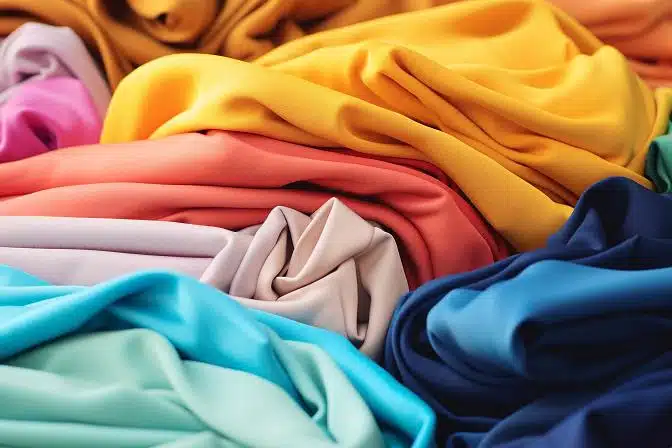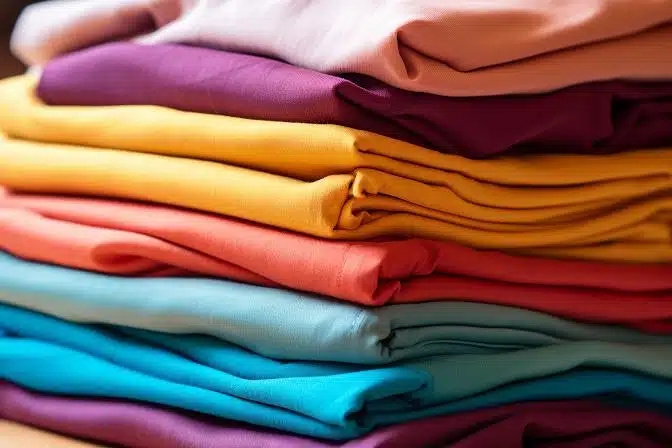When it comes to choosing the perfect T-shirt, the fabric plays a vital role in determining its comfort, durability, and overall performance. In this article, we will compare and contrast the advantages and disadvantages of three commonly used T-shirt fabrics: pure cotton, pure polyester, and polyester blend.
As a clothing manufacturer, it’s crucial to understand the properties of different fabrics to create comfortable, high-quality T-shirts. Let’s dive in and explore some key considerations.


- Pure Cotton: Pure cotton T-shirts are popular for their softness and breathability. Here are the key benefits and drawbacks of this fabric:
Advantages:
- Comfort: Cotton is a natural fiber that feels gentle against the skin, making it a go-to choice for those seeking maximum comfort.
- Breathability: The porous nature of cotton allows air to circulate, keeping you cool and reducing sweat buildup.
- Absorbency: Cotton has excellent moisture-wicking properties, absorbing perspiration and keeping you dry.
- Environmentally friendly: Cotton is a renewable resource and biodegradable, making it an eco-friendly option.
Disadvantages:
- Wrinkles easily: Cotton tends to wrinkle more easily than synthetic fabrics, requiring regular ironing or steaming.
- Shrinkage: Pure cotton can shrink after washing, so it is essential to follow proper care instructions.
- Longer drying time: Due to its absorbency, cotton takes longer to dry compared to synthetic fabrics.
- Pure Polyester: Pure polyester T-shirts have gained popularity for their durability and wrinkle resistance. Consider the following pros and cons:
Advantages:
- Durability: Polyester is known for its strength and resistance to stretching, shrinking, and wrinkling, making it highly durable.
- Quick-drying: Unlike cotton, polyester dries quickly due to its low moisture absorption rate.
- Color retention: Polyester holds color well over time, resulting in vibrant and long-lasting T-shirts.
- Easy care: Polyester garments require minimal ironing and are less prone to wrinkles.
Disadvantages:
- Lack of breathability: Polyester is not as breathable as natural fibers, so it may trap heat and cause discomfort in hot weather.
- Odor retention: Polyester tends to retain odors more than cotton, requiring frequent washing to keep it fresh.
- Environmental concerns: Polyester is derived from petrochemicals, making it less environmentally friendly compared to natural fibers.
- Polyester Blend: Polyester blend T-shirts combine the properties of polyester with other fibers like cotton. Here’s what to consider:
Advantages:
- Enhanced durability: Blending polyester with cotton or other natural fibers improves the fabric’s overall strength and longevity.
- Moisture management: The combination of polyester and cotton can provide excellent moisture-wicking abilities, keeping you dry during physical activities.
- Wrinkle resistance: Polyester blends tend to be less prone to wrinkling compared to pure cotton.
Disadvantages:
- Potential for decreased breathability: While polyester blends offer improved breathability compared to pure polyester, they might still trap more heat than pure cotton.
- Environmental impact: The environmental impact of polyester blends depends on the specific blend ratio and production process.
Choosing the right T-shirt fabric depends on factors such as personal preference, climate, and intended use. As a clothing manufacturer, testing different fabric blends and constructions is key to creating comfortable, quality garments. Pure cotton offers comfort and breathability but requires more care, while pure polyester provides durability and easy maintenance but may lack breathability. Polyester blends strike a balance between the two, offering improved durability and moisture management. Consider your priorities and make an informed choice based on the advantages and disadvantages of each fabric.
Here is a professional translation:
For information on different printing methods for various fabrics, including pros and cons, please click here.
